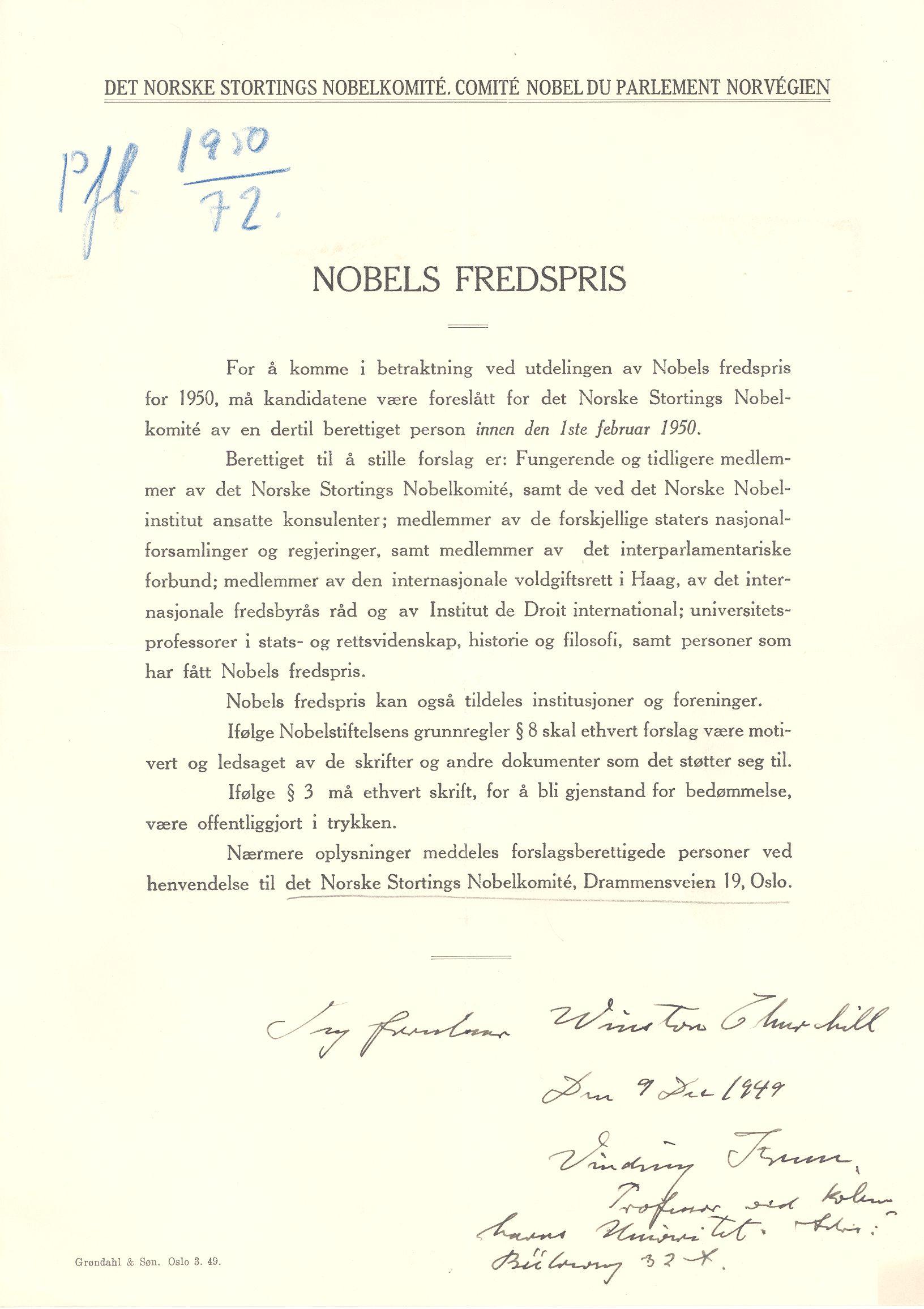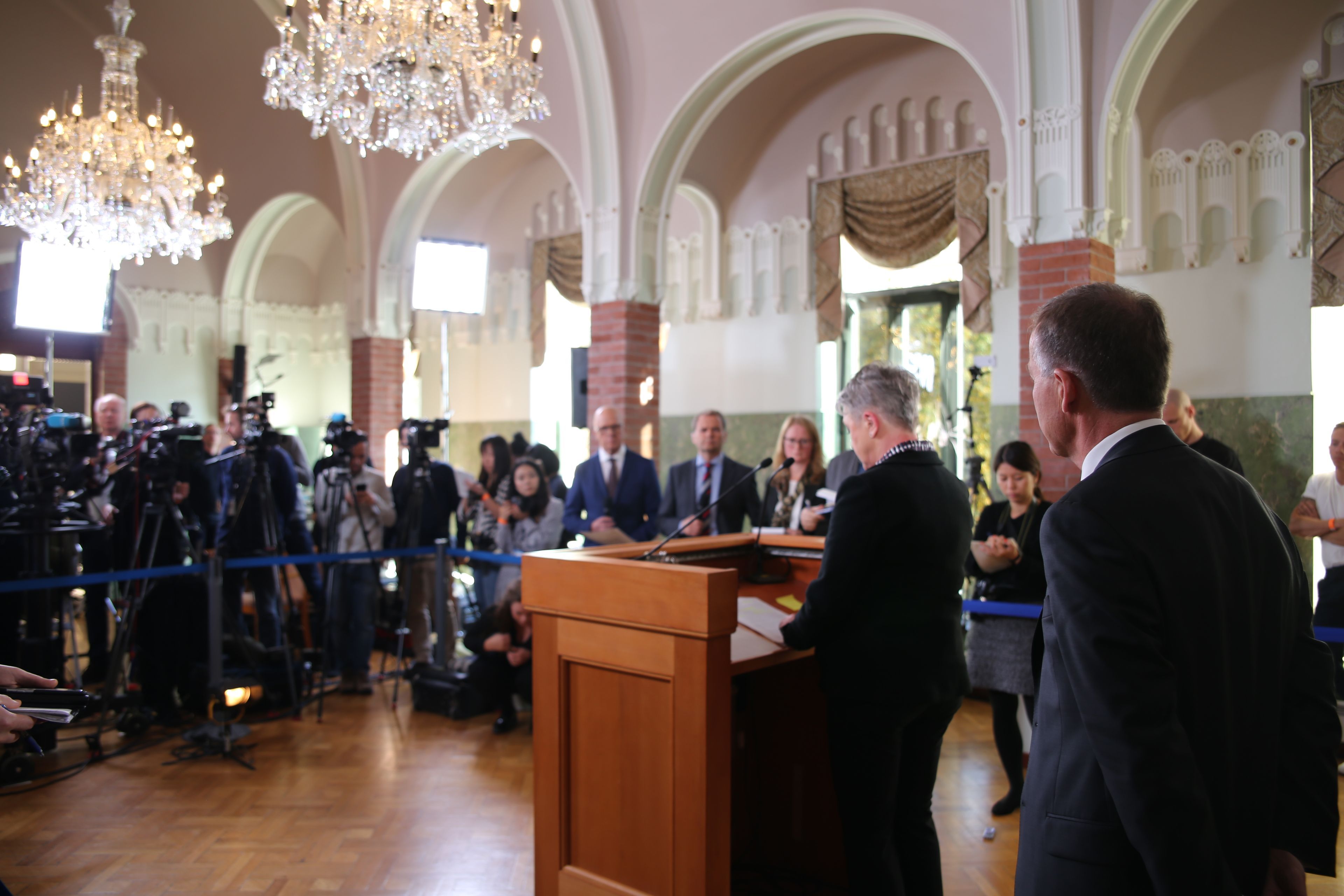The Nobel Year — under three minutes
The Norwegian Nobel Committee is responsible for selecting the Nobel Peace Prize laureates.
According to Alfred Nobel’s last will, the Nobel Peace Prize has been awarded by the Norwegian Nobel Committee since 1901. Alfred Nobel left no explanation as to why the Nobel Peace Prize was to be awarded by a Norwegian committee while the other four Nobel prizes were to be decided by Swedish committees. The Norwegian Nobel Committee is composed of five members appointed by the Norwegian Parliament.
1. Nominations & Secrecy
The deadline for submitting nominations for the Nobel Peace Prize is January 31. Every year, the Nobel Committee announces the number of valid nominations they receive. From there on, it usually takes the Committee until September to reach its final decision. This part of the process is surrounded with a lot of speculation. Some of the nominators even reveal their own candidates. However, the Nobel Committee itself never comments on the selection process. A nomination does not guarantee that the candidate will be considered, or even discussed by the Committee. In fact, in a matter of weeks, the Nobel Committee reduces the number of actual candidates to a handful: the short list.
"To simply be nominated is therefore not an endorsement or extended honour."
Who can nominate to the Nobel Peace Prize?
- University rectors, professors of political and social science, history, philosophy, law and theology;
- Leaders of peace research institutes and institutes of foreign affairs; members of national assemblies, governments, and international courts of law;
- Previous Nobel Peace Prize Laureates;
- Board members of organisations that have received the Nobel Peace Prize;
- Recent and past members of the Norwegian Nobel Committee; and former advisers of the Norwegian Nobel Institute.
2. The Short List, Reviews & Selection
Out of the 301 nominations, 223 are individuals and 78 are organizations. 301 is the fourth highest number of candidates ever. The current record of 376 candidates was reached in 2016. Nominations and reports are kept secret for 50 years.
Out of this pool of 301 nominations, the Nobel Committee selects the most relevant candidates. This short list consists of between five and twenty names. These candidates are then assessed by the Committee’s advisers. They have a few months to write their reports and, if necessary, get reports from other international experts. These reports make the basis for the Committee to make its final decision. This is the longest part of the process, but also the one we know the least about.
During their meetings, the five members try to choose the new Nobel Peace Prize laureate(s) unanimously. If this proves to be impossible, the decision is made by the majority. As a rule, the Committee reaches a decision only at its very last meeting before the announcement of the year’s laureate(s) at the beginning of October.
3. Announcement, Ceremony & Festivities
This year’s Nobel Peace Prize laureate will be announced in the beginning of October. It will kick off a hectic eight-week period, where the Nobel Peace Center produce a new exhibition, honouring the latest laureate.
On December 10th, the Nobel Peace Prize is awarded in Oslo’s City Hall. During the ceremony, the laureate receives the gold medal and diploma before holding their traditional lecture. The following day, the laureate comes to the Nobel Peace Center to open the new exhibition.
This article was first published on Medium by Adeline Cuvelier, Museum Educator at the Nobel Peace Center.
Article revised (Sept.2019) by Njaal Frilseth.
Share:

